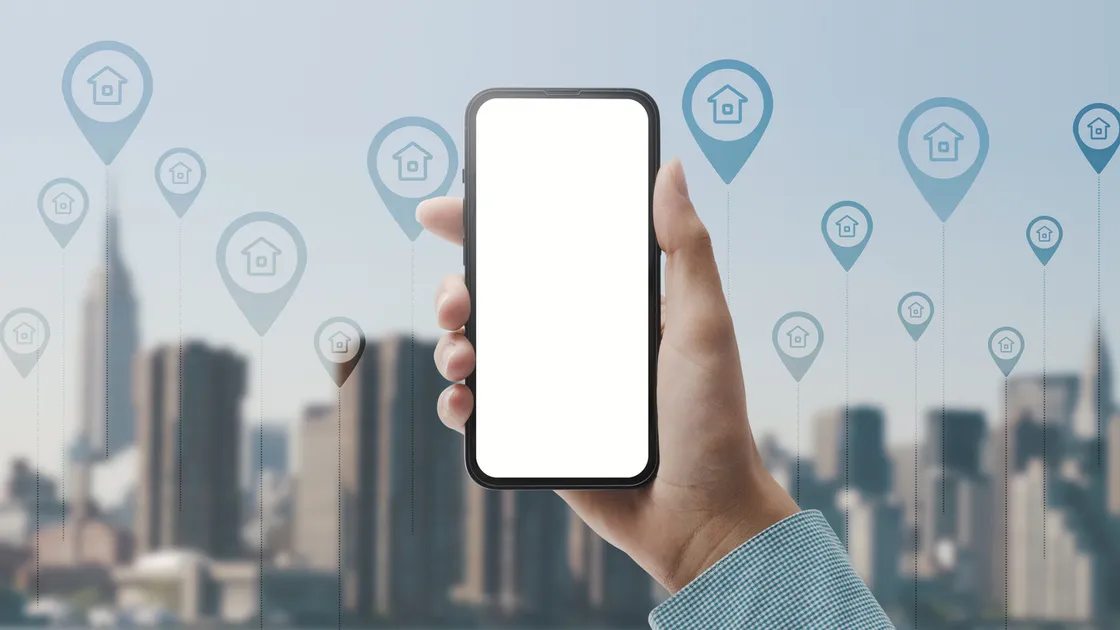How to Use Geofencing in Japan: Market Context and Key Operational Considerations

Until recently, the term “geofencing” was not widely recognized—even among marketing professionals—in Japan.
However, in response to social challenges such as an aging population and the need to revitalize local economies, location-based technologies are gaining attention as an effective way to deliver relevant information precisely where people are.
This article offers a comprehensive overview, starting from the basics of what geofencing is, to how Japan’s unique market environment influences its application.
We also cover practical considerations for implementation, including system design and day-to-day operations.
Questions like “How can it be practically used?” and “What risks should I be aware of?” are also addressed, making this guide a useful first step for anyone considering geofencing in Japan.
Whether you’re a marketer, developer, or business decision-maker, this guide will help you take that initial step with confidence.
Why Geofencing Deserves Attention in the Japanese Market Now
Japan’s Digital Marketing Market Is Booming—Projected to Reach ¥419 Billion by 2025
Source : https://www.yano.co.jp/press-release/show/press_id/2568
Japan’s digital marketing market is expected to reach approximately ¥419 billion (around USD 2.8 billion) by 2025, according to research by Yano Research Institute.
This rapid growth is being fueled by accelerated digital transformation across industries and increasingly sophisticated consumer behavior driven by smartphones.
Among the technologies gaining traction, geofencing stands out as a powerful bridge between the digital and physical worlds.
Traditional advertising often relied on uniform, one-size-fits-all messaging. Today, however, the demand is for personalized advertising—reaching the right people, with the right message, at the right time.
Geofencing enables this by delivering ads based on a user’s real-world location—targeting people who pass through or stay within a specific geographic area.
This approach is especially well-suited to Japan’s urban environment, where population density is high and daily life centers around predictable hubs like train stations and commercial complexes.
Advertisers are particularly drawn to the ability to target densely populated areas efficiently, enhancing both reach and cost-effectiveness.
In parallel, integrations with technologies like AI, CRM, and CDP are advancing, making One-to-One marketing—delivering the right content to the right person at the right moment—more achievable than ever.
In this evolving landscape, geofencing is no longer just an advertising tactic.
It’s becoming a strategic channel rooted in real-world behavior, and its adoption in Japan is expected to expand rapidly in the years ahead.
Japan’s Mobile-First Culture Makes It Ideal for Location-Based Marketing
Japan boasts one of the highest smartphone adoption rates in the world, with approximately 97% of the population using smartphones as of 2024.
Source : https://www.moba-ken.jp/project/mobile/20240415.html
In urban areas especially, daily activities such as commuting, shopping, and social interaction are deeply intertwined with mobile usage. As a result, the boundary between online and offline life has become increasingly blurred—a highly favorable environment for technologies like geofencing.
Additionally, Japan is home to widely adopted super apps such as LINE, Rakuten, and PayPay, which integrate a variety of services including messaging, payments, e-commerce, and location-based features.
Consumers are already accustomed to using their smartphones to receive real-time local information—like restaurant suggestions, nearby deals, or push notifications for coupons—based on where they are.
This established habit of “receiving real-world updates through a smartphone” creates a natural receptiveness to geofencing-based notifications and ads.
Unlike in regions where such technologies might feel intrusive or unfamiliar, Japanese users tend to accept location-based messages as part of their normal app experience.
What’s more, Japan’s dense urban planning and rail-centric transportation system make it ideal for precise geographic targeting.
Marketers can define geofences around train stations, shopping districts, or even specific commercial buildings—triggering tailored campaigns based on signals such as “entered this area,” “passed by,” or “stayed for a certain duration.”
Given these conditions—high smartphone dependence, strong app engagement, and a lifestyle tightly linked to specific locations—Japan offers a uniquely fertile ground for effective geofencing.
The key advantage lies not just in adopting the technology, but in seamlessly embedding it into daily routines, making it feel like a natural extension of everyday life.
Why Global Brands Are Exploring Geofencing in Japan
Global companies are increasingly considering the use of geofencing in Japan, driven by two key factors: the country’s attractive market size and highly sophisticated consumer behavior.
As the world’s third-largest economy, Japan offers significant potential—but its unique cultural norms and purchasing patterns demand localized marketing strategies.
In this context, geofencing is gaining attention as a flexible tool that allows brands to precisely tailor their messaging by region, lifestyle zone, and timing.
Japanese consumers tend to engage in careful research and take longer to make purchasing decisions.
This makes well-timed, location-specific outreach—such as during a morning commute near a train station or around shopping malls on weekends—especially effective in driving store visits or purchases.
For global brands entering Japan, it’s also critical to avoid intrusive or overly aggressive advertising.
Consumers value subtle, context-aware engagement. Geofencing supports this by enabling targeted messaging only to individuals likely to be interested, based on where they are and when they’re there—helping to minimize ad fatigue or negative sentiment.
Additionally, geofencing integrates seamlessly with other data infrastructures such as CRM, CDP systems, and mobile apps, making it a powerful component of holistic One-to-One marketing.
It also supports real-time performance tracking and optimization, which can not only enhance success in Japan but also inform global marketing strategies.
In short, geofencing is emerging as a strategic localization tool for global brands looking to succeed in Japan.
Its ability to blend precision, personalization, and cultural sensitivity is what makes it especially appealing to international marketers.
Learning from Success Stories: How Geofencing Is Being Used Effectively in the Japanese Market
Food & Retail: Localized Promotions and In-Store Traffic Strategies
In Japan’s food and retail industries, geofencing is increasingly being used as a localized promotion tool to drive foot traffic in competitive urban areas.
Especially in cities where multiple businesses operate in close proximity, the challenge lies in attracting customers to a specific store at the right time.
Geofencing offers a solution by enabling the delivery of real-time, personalized messages to users who enter a defined area.
For example, a restaurant chain could send a push notification with a “today-only coupon menu” to users who enter a 300-meter radius around an office district just before lunchtime.
This approach effectively taps into user psychology—people are more likely to respond because they’re physically present in the moment.
Retailers are seeing similar success.
Department stores and shopping malls use geofences around their buildings to push updates on sales events or extra point days, boosting purchasing motivation while customers are still on the premises.
Other strategies include triggering reminders to previous visitors who haven’t returned in over a month, encouraging repeat visits.
Japanese consumers are particularly receptive to mobile-based promotions, especially when tied to immediate benefits such as discounts or reward points.
This behavior aligns perfectly with geofencing’s capabilities, contributing to higher engagement and conversion rates.
As a result, geofencing is becoming a standard practice in the food and retail sectors as a real-time activation tool, designed to move nearby users into action.
With the ability to craft promotions on a hyper-local scale, businesses are recognizing its strong return on investment and growing strategic value.
Tourism & Public Sector: Real-Time Notifications for Events and Emergency Response
Geofencing Applications Beyond the Private Sector
The use of geofencing is not limited to private businesses.
It is also gaining traction in public initiatives such as tourism promotion and disaster response.
For local governments and tourism organizations in particular, geofencing’s strengths—real-time delivery and location-specific targeting—make it a highly valuable tool.
In tourism, for example, more destinations are using geofencing to automatically send visitors information about nearby attractions, event announcements, or exclusive coupons as they arrive at key spots.
This is especially effective in Japan, where the concept of “circular tourism” is common—travelers tend to explore multiple locations within a given area. Timely information delivered on-site can significantly enhance their experience and encourage further exploration.
In the public safety sector, geofencing is also being used for emergency alerts and evacuation guidance.
When a disaster risk arises in a specific area, alerts can be sent only to those currently in that zone, prompting quick and accurate responses.
For instance, people near a swelling river during heavy rain, or those in an earthquake-affected zone, can receive targeted updates such as evacuation shelter locations—something that conventional mass media cannot deliver with such precision.
Some municipalities in Japan have even started incorporating geofencing into disaster preparedness drills.
By allowing residents to experience these real-time notifications during training, communities can improve readiness and responsiveness in actual emergencies.
In both tourism and public administration, geofencing’s ability to deliver “in-the-moment, on-location” notifications makes it a powerful tool for increasing the relevance and impact of information—contributing to local revitalization and public safety.
Finance, Insurance & Real Estate: Building Trust and Boosting Conversions with Personalized Notifications
In industries such as finance, insurance, and real estate, timely and context-aware communication is crucial—particularly when aligned with a customer’s life stage or decision-making process.
This makes geofencing an exceptionally powerful tool in the Japanese market, where cultural values such as trust, safety, and thoughtful decision-making are deeply rooted.
For example, real estate firms are increasingly using geofencing to send location-specific push notifications—such as a campaign alert for visitors near a housing exhibition site, or personalized updates to past prospects when a new property becomes available in their area.
These subtle, well-timed messages have proven effective in increasing store visits and customer engagement.
Banks, too, are leveraging geofencing in conjunction with their mobile apps and customer data.
This allows them to notify users of investment seminars when they’re near a branch or to suggest a mortgage review based on behavioral cues and location—delivering personalized value at precisely the right moment.
In the insurance sector, geofencing enables risk-specific suggestions to potential customers for auto or travel insurance.
For example, when users are near airports or busy shopping areas, they may receive tailored proposals that emphasize peace of mind—helping to position the brand as a helpful partner rather than a pushy seller.
This is especially effective in Japan, where consumers tend to be cautious and research-driven.
Delivering relevant information just when it’s needed strengthens credibility and reduces resistance, building a more natural relationship between brand and customer.
Moreover, given the high contract values typical in these sectors, well-timed contact at the pre-conversion stage can serve as the final nudge in the decision-making process.
Geofencing plays a key role here, enabling communications that align with the right place, context, and timing—guiding customers toward action without feeling forced.
Ultimately, this approach goes beyond conventional advertising.
It helps foster genuine trust, encourages long-term relationships, and contributes to maximizing Customer Lifetime Value (LTV)—a strategic win for brands operating in Japan’s relationship-centric market.
Challenges and Considerations for Using Geofencing in Japan
Privacy Considerations and User Consent in Japan
When using geofencing in Japan, privacy protection and data consent are among the most critical issues that require careful handling.
Japanese consumers are particularly sensitive to how their personal information is collected and used, and they expect companies to uphold high ethical standards regarding behavioral data.
Geofencing relies on tracking user location to trigger relevant notifications and ads based on physical movement.
As such, businesses must provide a clear explanation of why and how location data is used, and obtain explicit consent before any data collection takes place.
Japan’s Amended Act on the Protection of Personal Information, which took effect in April 2022, introduced stricter rules on “personally related information.”
Under this regulation, sharing location data with third parties for purposes like advertising requires prior user consent by default.
To comply, companies must implement user interfaces (UI) that clearly communicate the purpose of data use—going beyond lengthy terms and conditions.
For instance, presenting a simple, direct prompt such as “Do you agree to share your location information?” is more effective in building trust than buried legal text.
Equally important is allowing users to modify their consent preferences or opt out at any time after initial agreement.
Transparency should be maintained throughout the entire data lifecycle, with companies regularly reviewing their privacy policies, updating terms of service, and clearly documenting their data management processes.
In Japan’s trust-driven market, marketing initiatives that focus solely on “convenience” can backfire.
Consumers evaluate not just the value of the service, but also a brand’s attitude toward privacy.
Therefore, using geofencing as a trusted marketing tool requires a commitment to ethical data practices, clear communication, and robust consent management.
Addressing Device and OS Limitations in Geofencing Implementation
One often-overlooked challenge when implementing geofencing is the variation in behavior across devices and operating systems (OS).
In Japan, the market share between iOS (Apple) and Android (Google) is nearly equal. However, recent enhancements in privacy protections—especially on iOS—have made geofencing behavior less predictable and more fragmented across platforms.
For instance, on iOS, location access in the background is heavily restricted. Unless users explicitly select “Always Allow” in their location settings, geofencing-triggered notifications may fail to deliver.
Even if the app is installed, geofencing may be rendered ineffective if push notifications are disabled by the user.
To ensure reliable performance across devices and platforms, the following strategies are recommended:
- Platform-Specific Scenario Design
Tailor your approach based on OS behavior. For iOS users, provide clear in-app guidance on how to enable location and notification settings.
For Android users, where location permissions tend to be more flexible, implement deeper location-linked engagement tactics. - Nudge-Based Incentives at Key Touchpoints
Use offline or online channels—such as during store visits or checkout flows—to encourage users to enable settings.
For example: “Turn on notifications to receive an exclusive in-store reward.”
This approach helps users opt in willingly, based on perceived value. - Multi-Channel Strategy
Don’t rely solely on app push notifications.
Combine geofencing with other communication channels like LINE Official Accounts, SMS, or email to ensure coverage, reduce drop-off, and maintain a stable engagement flow.
While Japanese users tend to be cautious with app permissions, they are also willing to opt in when clear benefits—such as discounts or convenience—are presented.
Therefore, success in Japan requires more than just technology deployment.
It demands a user-centric onboarding experience and thoughtfully designed interaction points that make it easy and rewarding for users to engage with geofencing features.
Minimizing the Risk of Mistargeted Notifications and Poor User Experience
Due to its reliance on location data, geofencing carries the inherent risk of mistargeted notifications—messages sent to users in the wrong place, at the wrong time, or with irrelevant content.
In Japan, where consumers tend to dislike intrusive advertising, such errors can damage brand perception and undermine trust.
Common causes of mistargeting include:
- Overly broad geofence radius
(e.g., setting a geofence around a station but unintentionally covering unrelated nearby facilities) - Improper audience segmentation
(e.g., sending loyalty campaign notifications to first-time visitors) - GPS or network inaccuracies, causing small but meaningful location errors
- Poorly timed messages, misaligned with daily routines or local behavior patterns
To minimize these risks, companies should implement the following best practices:
1. Improve Geofence Precision
Design smaller, more granular zones—down to individual floors or store sections in large complexes.
Instead of geofencing an entire shopping mall, consider setting geofences around specific departments or branded areas.
2. Refine Targeting and Timing
Use multi-layered targeting conditions such as:
“Women in their 30s, visiting XX Mall on a weekend afternoon, with prior browsing history of Product A.”
This ensures that messages are both relevant and contextually appropriate.
3. Conduct A/B Testing in Advance
Before launching a full campaign, run test notifications with a limited user group.
Evaluate delivery accuracy, timing, and response rates to validate the setup before going live.
4. Establish a Feedback and Complaint Channel
If a misfire occurs, be prepared to respond quickly.
Provide clear in-app or web-based contact options and build feedback loops that incorporate user insights into ongoing improvements.
While geofencing offers a powerful tool for timely and location-aware engagement, it can also easily backfire if not executed thoughtfully.
In Japan’s high-trust, low-tolerance market, designing from the user’s perspective—and maintaining rigorous testing and validation—is essential to ensure success without harming the brand experience.
Adoption Rates and Future Growth Potential in Japan
Compared to Western markets, geofencing adoption in Japan remains in its early stages.
Currently, implementation is limited mainly to forward-thinking companies and select municipalities, often on a pilot or experimental basis. Widespread use has yet to materialize.
However, interest in location-based marketing strategies is steadily rising—driven by pressing social issues such as a shrinking population, aging demographics, and the need for regional economic revitalization.
Within the context of Smart City initiatives and digital tourism (Tourism DX), the ability to deliver the right content to the right person at the right place is increasingly valued.
This makes geofencing a powerful enabler of context-aware, real-time engagement.
Advancements in complementary technologies like IoT, 5G, and AI are also enhancing the accuracy and speed of location data, paving the way for more sophisticated geofencing solutions.
That said, Japan’s cautious, privacy-conscious culture necessitates careful attention to user consent, clear communication, and opt-out mechanisms.
Interestingly, this also means that companies that invest in trust-first design and transparent data practices are more likely to gain first-mover advantage in the market.
In summary, although still in a developmental phase, geofencing in Japan holds strong future potential as a field that intersects social innovation and emerging technology—positioning itself as a key pillar in the country’s digital transformation efforts.
3 Key Factors for Successful Geofencing in Japan
To succeed with geofencing in the Japanese market, businesses must go beyond simply adopting the technology.
Success depends on carefully aligning with cultural expectations, user psychology, and local behavioral norms.
Below are three critical factors that consistently emerge as keys to effective implementation in Japan.
Designing Value from the User’s Perspective
Japanese consumers tend to assess notifications based on personal relevance and emotional response—often asking themselves, “Is this truly useful for me?” or “Is this just annoying?”
As a result, it is essential to design geofencing content that clearly communicates both utility and benefit to the user.
Rather than generic promotions, messages should offer context-specific value, such as:
- “Exclusive offers only available at this location”
- “Coupons you can use right now, right here”
When users perceive that a message is timely, relevant, and personally meaningful, they are more likely to respond positively and take action.
This sense of personalization and ownership builds trust and encourages deeper engagement.
Optimizing Timing and Context
To fully leverage the power of geofencing, timing is just as important as location.
For example, a message received during a morning commute may feel intrusive, whereas the same message delivered during a shopping trip or sightseeing outing may be welcomed.
Success depends on building a delivery logic that considers not only location but also day of the week, time of day, weather, and behavioral patterns.
Brands must test and refine when messages feel most natural and relevant to the user.
This requires shifting from a purely location-based approach to a more contextual strategy—one that asks,
“Why this person, right now, at this moment?”
The more aligned the message is with the user’s current situation, the more effective and well-received it will be.
Building Trust Through Ethical Operations and Data Design
In Japan, consumer expectations around transparency and ethical data use are growing steadily.
Because geofencing relies on sensitive location data, the way it is managed directly impacts brand trust.
To maintain user confidence, businesses must ensure thoughtful operational design, including:
- Clear and proactive consent mechanisms
- Accessible and transparent privacy policies
- Visible opt-out options
- A well-defined response process for mistargeted notifications
Trust is also reinforced by a minimalist data approach—collecting only what is necessary for clearly defined purposes, rather than gathering excessive user information.
By addressing the three pillars of value, timing, and trust, geofencing can transform from a source of disruption into a genuinely helpful user experience.
Understanding the unique cultural expectations and consumer psychology of the Japanese market is essential for achieving sustainable, long-term success.
Trust and Thoughtful Design Are the Keys to Effective Geofencing in Japan
Geofencing is an advanced marketing technique that delivers timely, location-based information using users’ real-time data and behavioral insights.
While it has already shown strong results in overseas markets, adoption is gradually increasing in Japan as well. However, in a country where privacy concerns run high, the success of geofencing depends heavily on the quality of the messaging and the level of trust users place in the brand.
The key to success lies in delivering relevant content at the right moment, while maintaining full transparency in how data is used.
When executed with care, geofencing can evolve from being seen as a disruptive ad channel into a welcome and useful experience—one that also helps address uniquely Japanese challenges such as population decline and regional revitalization.
If you’re unsure how to begin implementing geofencing in the Japanese market, feel free to consult with hotice.
We specialize in strategy development and operational support tailored to the local market—and can help you design the most effective approach for your industry and goals.






